Chapter 9 Structure Of Democracy And Rights Of People Background
Constituent Assembly is a body to frames a constitution with several members from different provinces. Indians had a long demand for this assembly. Dr. Rajendra Prasad became the first President of the Constituent Assembly.
The first session of the Constituent Assembly was held from 9th December to 23rd December 1946. At that time the Draft Committee was formed with Dr. Bhimrao Ramji Ambedkar in the chair.
After that, the second session of the Assembly was held from 20th January to 25th January. The third session was held from 22nd April to 2nd May and the fourth session 14th-22nd July 1947.
Dr. Rajendra Prasad
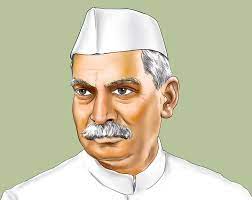
The Constituent Assembly aimed to make India an “Independent Sovereign Democratic Republic”. The constitution framed by Ambedkar was accepted by Constituent Assembly on 26th November 1949 A. D. and Dr. Rajendra Prasad signed it.
“WBBSE Class 8 History Chapter 9 notes on structure of democracy and rights of people”
On 26th January 1950 A. D.’s new constitution came into force. The Constituent Assembly of India constructed the constitution of free India for 2 years 11 months and 18 days. It had held 11 sessions.
| Class 8 General Science | Class 8 Maths |
| Class 8 History | Class 8 Science LAQs |
| Class 8 Geography | Class 8 Science SAQs |
| Class 8 Maths | Class 8 Geography |
| Class 8 History MCQs | Class 8 History |
After Dr. Rajendra Prasad’s prolonged discussion on the draft of the constitution, 2473 amended proposals were taken out of 7635. An amount of 64 lakhs of rupees was spent on the writing of this constitution.
The most important personalities involved in it were as B. R. Ambedkar, Rajendra Prasad, Sarbapalli Radhakrishnan, Jawaharlal Nehru, Sardar Vallavbhai Patel, Gobindballav Panth, Abul Kalam Azad, Acharya J. B. Kripalini, K. M. Munshi, T. T. Krishnamacharya, Gopal Swami Eyre, Alladi Krishnaswami Eyre, Purushottam Das Tandon, etc.
B. R. Ambedkar
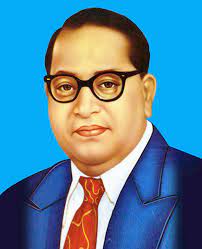
Ambedkar was called “the father of the Indian Constitution”.
Preamble To The Indian Constitution
The preamble was made to form the constitution and this preamble is called ‘The Mirror’ of the Indian Constitution. It is a ‘miniature’ and ‘autobiography’ of the entire constitution.

Thakurdas Bhargay said-‘It is the soul of the constitution. It is a key of the constitution”. The main theme of the preamble are ‘We, the people of India’, having solemnly resolved to constitute, India into a Sovereign [socialist secular] ‘Democratic Republic and to secure to all its citizens;
‘Justice’, social, economic, and political; ‘Liberty’ of thought, expression, faith, belief and ‘Equality’ of status and of worship; opportunity and to promote among them all, ‘Fraternity’ assuring the dignity of the individual and the unity and integrity of the nation;
In our Constituent Assembly this twenty-sixth day of November 1949, Do Hereby adopt, enact and give to ourselves this constitution. ‘Sovereignty’ means the right to vote of all adult persons in trophic. ‘Socialism’ means state control over capital.
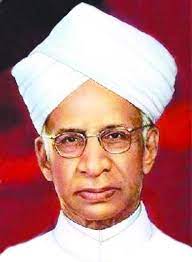
‘Secular’ means liberty for all religions. ‘Republic’ means ‘Power of people not of any king’. P. B. Gajendragadkar said- “The basic philosophy of the constitution of India is to be found in essence in the preamble itself.”
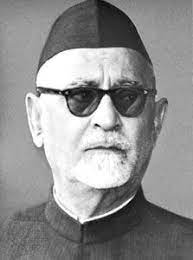
Chapter 9 Structure Of Democracy And Rights Of People Organised Structure Of Democratic Republic
We can easily understand the structure of the democratic republic by analyzing the administration of India. The President, Prime Minister, Chief Minister, Parliament, mentioned in the constitution of India correlate.
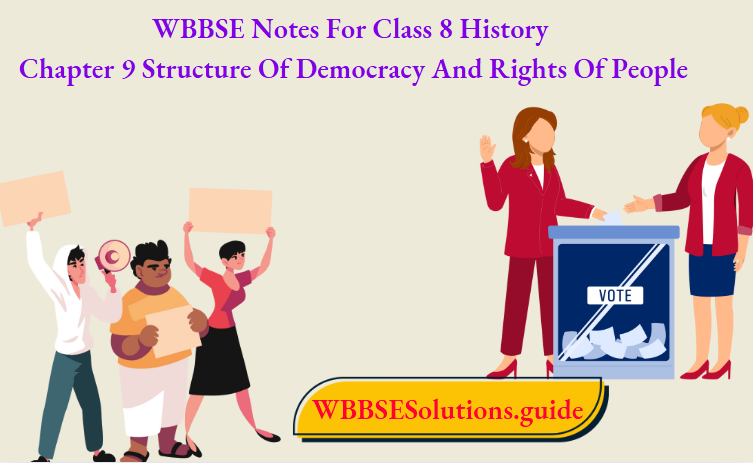
The President
Indian President is the constitutional held. An Indian citizen should be elected in the Lok Sabha (upper house of the Parliament) to be the President of India. So he is an elected person. He can be re-elected after the expiry of his tenure.
“Class 8 History Chapter 9 structure of democracy and people’s rights WBBSE study material”
He should be bankrupt. The minimum age for this post is 35 years. He is elected for 5 years.
The power of the President are five types, such as
- Imperial
- Executive
- Legislative
- Financial and
- Emergency.
But the Indian President is not so powerful like the President of U. S. A. Article no. 74 (1) refers to “there shall be a council of ministers with the prime minister at the head to aid and advise, the president exercise his functions.”
At the same time, we have to remember that the President of India is a “titular executive, not real”. The Vice-President of India maintained all duties and responsibilities of the President in time of his absence.
The first, second, and third Presidents of India were as Dr. Rajendra Prasad (1950-1962), Dr. S. Radhakrishnan (1962-1967) and Dr. Zakir Hussain (1967-1969) respectively.
Cabinet Ministers
Under the leadership of the Prime Minister the Cabinet Ministers are formed. The President exercises his functions with the advice of these ministers.
There are three types of ministers in the Central Council of ministers, Cabinet Ministers, Ministers of State, and Deputy Ministers. They are togetherly responsible to Lok Sabha.
Lawell said it as “the keystone of the political witch”. Similarly, Sir Ramsey Moore remarked, “It is a steering wheel of the state”.
Indian Parliament
Parliament has two chambers an upper chamber of ‘the Rajya Sabha’ and a lower chamber or ‘the Lok Sabha’. Raja Sabha consists of 250 elected members and the Vice-President presides over this sabha.
The Lok Sabha consists of 545 elected members and the Speaker presides over it. India is a country of a Parliamentary form of govt.
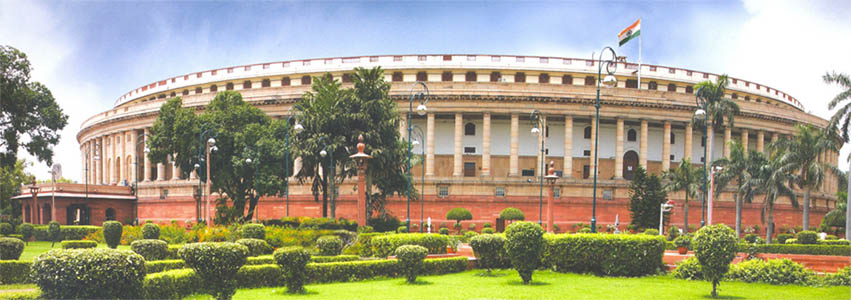
A member of the Lok Sabha must be a citizen of India, acquired age of 25 years, not to be a proclaimed insolvent or offender, and should not be holding a profitable office under the govt.
The Lok Sabha is generally elected for 5 years. The Deputy Speaker acts as the Speaker in time of his absence. The members of a Rajya Sabha must possess qualities like he should be Indian citizens, being 30 years of age, not to be an offender or involve in any profitable office under the govt, etc.
The Vice-President is really the ex-officio Chairman of the Rajya Sabha in India. In absence of the Vice-President, the Deputy Chairman acts of the House as the.
Prime Minister
Indian Prime Minister is as important as the Prime Minister of Britain in the Parliamentary form of government. Generally, the Prime Minister is elected by the President if his party could get an absolute majority in the general election of the Lok Sabha.
Jawaharlal Nehru
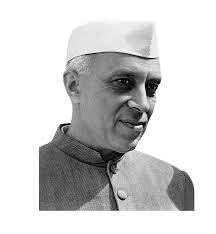
The Prime Minister comes to power for five years. As a leader of the Lok Sabha, he can form Cabinet Ministers and can advise the President, Attorney General, Election Commissioner, Public Servants, etc.
Lal Bahadur Shastri
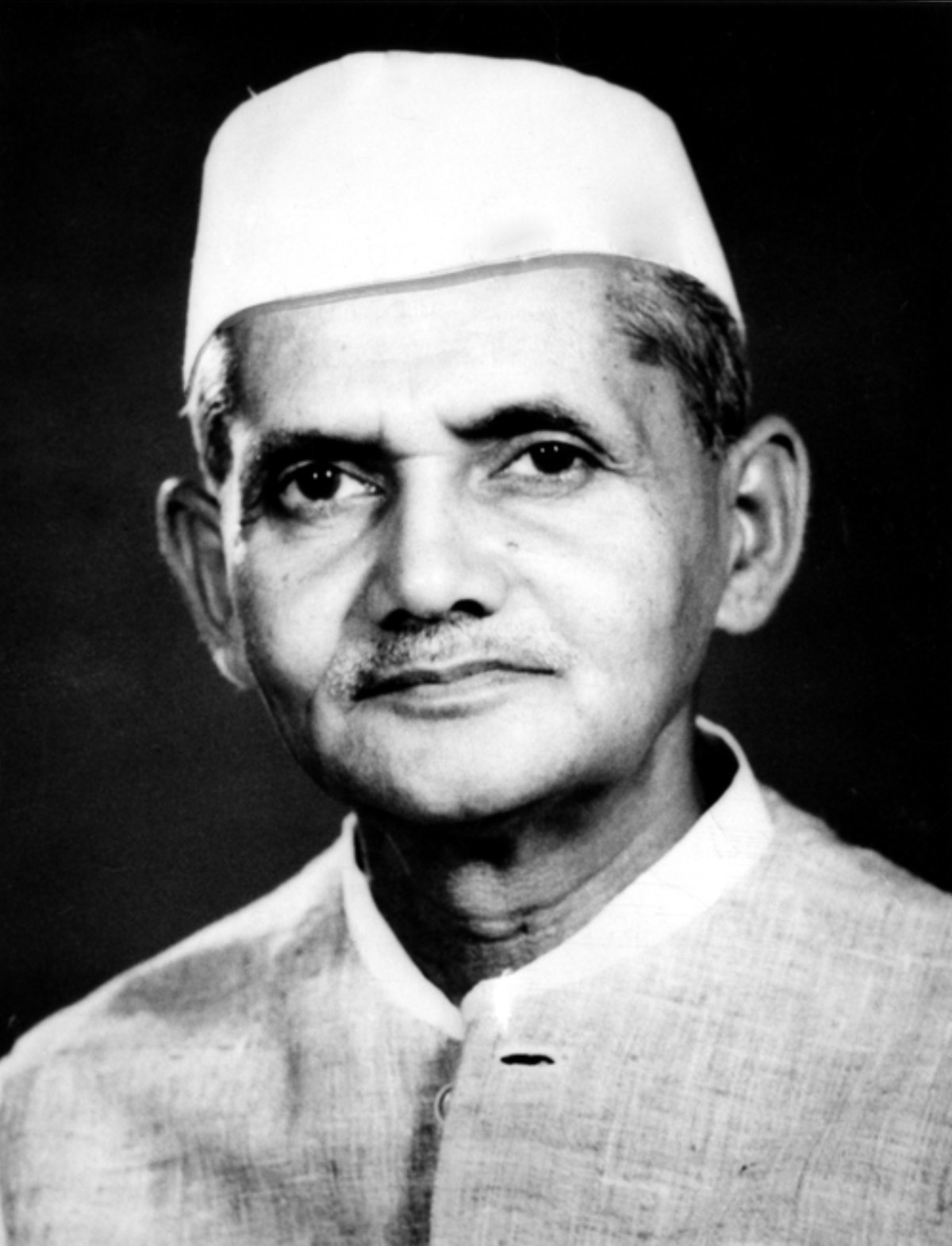
He is the real executive in the democratic republic of India. The first, second, and third Prime Ministers of India were as Jawaharlal Nehru (1947-1964), Lal Bahadur Shastri (1964-66), Guljarilal Nanda, and Smt. Indira Gandhi (1966-1977, 1980-1984).
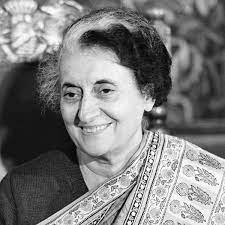
Chapter 9 Structure Of Democracy And Rights Of People The State Legislature
The Legislature of a state has two parts Sabha or Legislative Assembly (Upper House) and Vidhan Parishad or Legislative Council (Lower House). Some states have only one House known as Vidhan Sabha only.
The Vidhan Sabha can have a maximum of 500 members and a minimum of 60 members. The Vidhan Sabha of West Bengal consists with 294 members. But in Nagaland, Goa, Sikkim, and Mizoram the members of the Legislative Assembly are less than 60 each.
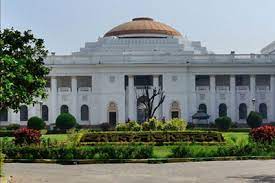
The members of the State. Legislature are to be elected. 1/12 of the whole members of the Parishad is elected by the teachers of 3 years standing of the H. S. Schools or Colleges of the state.
The State Legislature makes laws on 66 subjects that have been mentioned in the State List and can enforce laws on 47 subjects included in the Concurrent List too.
Chapter 9 Structure Of Democracy And Rights Of People Lok Sabha And Rajya Sabha
Whereas Lok Sabha is dissolved, the Rajya Sabha is a permanent house. Lok Sabha is generally formed for 5 years with elected members of 545. The Speaker presides over the Lok Sabha, the Vice-president presides over the Rajya Sabha.
“Detailed notes on structure of democracy and rights of people for WBBSE Class 8”
The members of the Rajya Sabha is elected for 6 years, but 1/3 of the total members retire after every 2 years. The parliament of India has to confirm a galaxy of functions, such as making of laws, executing govt, control over national finance, electoral functions, and judicial activities, etc.
The Governor
The chief constitutional executive authority of a state is the Governor. He is appointed or transferred by the President. A Governor of India must be possessed with the qualifications like a citizen of India physically and mentally fit, not to be a proclaimed offender, and age of 35 years.
Generally, he is appointed for 5 years, but he can be removed by the President from his office before the expiry of his term of service. The Governor is the constitutional head of a state.
His main powers are as executive powers, legislative powers, judicial and discretionary powers.
Chief Minister
According to Article no. 164(1), the Governor appoints the Chief Minister of a state but he must be a leader of the majority party in the Vidhan Sabha.
The Chief Minister with the formal advice of the Governor appoints the members of the State Council of Ministers. But a member who is not elected can also be selected as a Minister. He is the real authority of a state.
If the Chief Minister resigns on any ground, it is totally regarded as the resignation of all the Ministers of a state. The functions of the council of ministers of a state are a carbon copy of the functions of the Council of Ministers of the central govt.
All the Ministers are togetherly responsible to the State Legislature for their acts of commission and omission. The Chief Minister of a state and the Prime Minister at the central are the same in duties, but the jurisdiction is different.
On the advice fo the Chief Minister the Governor of a State exercises his functions. The Chief Minister occupies an important role to form his cabinet and presides over its meetings of it to distribute ‘Portfolios’ to the ministers as he desires.
He can ask any Minister to resign. He is the sole spokesman of the state govt. The Governor can override his advice, only in times of emergency. The Chief Minister is called the “real ruler and supreme head of the state” and “Primas meter pares-first among equals.”
Local Self Government
Recognition of Local government is our historical tradition. The tradition is accepted in Article No 40 of our Constitution. Village Panchayats, Panchayat Samitis, Zila Parishads, Municipalities, and Corporations are togetherly consisted the local self-rule in India.
The people of each and every village, town or city elect representatives to govern their community in their respective areas. Thus people directly participate in the administration through their representatives.
It is the feature of democracy and this system is called ‘local self-government’. The self-government body for rural areas is called the ‘panchayat’ and for urban areas is called the ‘municipality’.
The three-tire panchayat system based on Grampanchayat Panchayat Samiti and Zila parishad is the pilar of the Local Self Government.
Gram Panchayat
The word ‘panchayat’ has come from the word ‘panch’ which was generally used for five village elders who settle disputes and took absolute decisions.
Now all local self-government bodies for village areas are called ‘panchayats, which are formed as per definite rules and regulations. The local self-government for a village is called “Gram Panchayat”.
The village panchayat consists of the
- Gram Sabha,
- Gram Panchayat and
- Naya Panchayat.
Every villager above 18 years old, whose name is on the voter list can be a member of ‘The Gram Sabha’ and elects the head of ‘The Gram Panchayat’.
The Gram Sabha can review the works and accounts of the Gram Panchayat and can also remove the inefficient and corrupt members of the Gram Panchayat. It is formed for five years normally.
The elected members elect one of them as ‘Gram Pradhan’ and ‘Upagram Pradhan’. As per the density of the population rd of these posts are reserved for women, SC, and ST. Gram Sabha elects the ‘Naya Panchayat’ or village court to judge the offenders or criminals.
The Gram Panchayat looks after the roads, irrigation ‘small industries’ agriculture, supply of drinking water, Public health, education, records of births and deaths, etc.
Panchayat Samiti
The second level of the Gram Panchayat system in West Bengal is ‘Panchayat Samiti’ States with a population of more than 20,00,000 have Block Samities or Panchayat Samiti.
People of a Block elect the members of a Block Samiti which have some ex-officio members. The members of Panchayat Samiti elect a ‘Chairperson’ (Pramukh) and a ‘Vice-chairperson’ (Upa-pramukh). rd seats of the total posts are reserved for women, SC, and ST for 5 years like Gram Panchayat.
The Panchayat Samiti supervises the work of Gram Panchayats within a Block. It generally looks after the developmental works in the block.
It arranges for various welfare activities like primary and adult education, public health care, drinking water, sewerage, seeds for farmers, self-employment etc.
Zila Parishad
The people of a district generally elect the members of ‘Zila Parishad’, which has also some ex-officio members. Out of 23 districts of West Bengal, 17 districts have Zila Parishad and only in Kolkata and Darjeeling there is a Zila Parishad.
It has a President and Vice-president who are elected by the members among themselves for 5 years. According to West Bengal Panchayat Act, the convention of a meeting of Zila Parishad after every three months is compulsory.
And the President and Vice-president would not be attached with any profitable business or organization during holding their posts. This Zila Parishad supervises the activities of Panchayat Samities and Gram Panchayats.
It examines the budgets of Panchayat Samities and distributes the funds of Govt. among them. It also prepares the plans for the progress of the district and sometimes advises the Government on development.
Municipality
Lord Ripon adopted the municipal rule first in 1882 but Bengal Municipal Act was passed in 1932. The municipality is an important part of local self-rule in West Bengal. An urban self-ruling body is called a ‘municipality’.
There are three types of municipalities in India, like ‘Nagar Panchayats’ for semi-urban areas, ‘Municipal Councils’ for city areas, with populations of less than 10 lakhs, and ‘Municipal Corporations’ for larger populated city areas.
State Government can divide each municipal area into some ‘Words’. A representative from each word is elected as ‘Councillor’. All the councilors together form a council known as a ‘Municipality’. It is formed for 5 years.
All the members who are 21 years of age or above may stand for a municipal election. There are also seat reservations for SC, ST, OBC, and women. The members of the municipal council elect a chairman and a Vice-Chairman among themselves.
Role Of The Constitution In Social Development
Indian constitution is the safeguard of the citizens. It has given the right to equality in society. Now men and women are equal in society. The constitution takes steps against the exploitation on women.
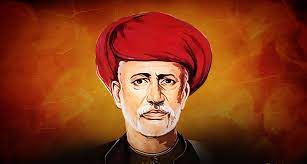
For a healthy society and social integrity, our constitution provides lot of opportunities for the development of backward and depressed class people. The constitution of India does not tolerate racial discrimination or religious orthodoxy in society and the state.
In the preamble to the Indian constitution therefore it has clearly been mentioned that “India is a secular country”. Its main objective is to make India a welfare country.
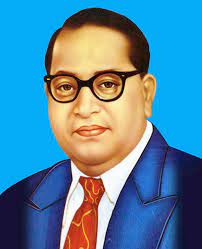
Equal rights to land and property for both males and females have been legalized by the amendment of the Indian Constitution in 2005.
Prevention Of Family Cruelty Act of 2005
In 2005 the ‘Prevention of Family Cruelty Act’ was passed by the Supreme Court. To protect women from unjust and exploitation this act is very helpful.
If any woman is exploited or insulted by anyone in any place, then and she can appeal to the department of Chief, Judicial Majitrate. Apart from this, she can also appeal to District Protection Officer for her safety.
Role of the Constitution to the protection of the Rights of Backward citizens: ‘Dalit’ is a Hindi word. It is being used in India for a very long time.
The extremely poor people, who are deprived of human rights, because of forceful oppression, are called ‘Dalit’, In a journal edited by Dr. B. R. Ambedkar, the Depressed Classes of British rule has been called ‘Dalit’.
The Dalit people of India have been prey to economic, social, political, and cultural deprivation as a result of century-old apartheid issues. The first person to start a movement in Maharashtra was Mahatma Jyotiba Phule in 1872.
For this purpose, he formed ‘Satya Shodhak Samaj’ in 1873. Dalit politics and movement started taking shape and extending with the initiative of his follower, Dr. Bhimrao Ramji Ambedkar.
During 1924 to 1930, he transformed Dalit Movement into a radical movement. The main purpose of his movement was to end the social problems and deprivation faced by the Dalit people. It was a legal fight along the lines of direct satyagraha.
“Complete guide for WBBSE Class 8 History Chapter 9 on structure of democracy and rights”
Ambedkar led and organized movements like the Choudar Lake Movement and Kalaran Satyagraha. The untouchable Mahar community were forbidden to use water from Choudar Community Lake.
Because of Ambedkar’s movement, not only were the rights of the Dalit people to drink water from the lake restored but they were also given right to serve water to all communities.
This humane aspect of the movement was depicted in Tagore’s dance drama ‘Chandalika’. V. R. Shilde founded ‘The Dalit Mission Society’ in 1906. Its president N. G. Chandravarkar demanded to the British a separate electorate for the backward Dalits.
Respected justice Sir Narayan Ganesh Chandavarkar convened a Dalit conference on 11 November 1917 where he demanded
- Compulsory free education for Dalits.
- Progress the social dignity and status of the Dalits and
- Right to elect the Dalit representatives in the legislative council.
In the Montague Chelmsford Reforms Act (1919) Dalits were recognized in Indian Politics. As a result, Justic Party of the Dalit’ in Madras was formed and in the election, this party occupied 63 seats out of 98 seats in 1920 and Justice Party’s Government was formed in Madras.
In 1918 all India Dalit conferences was held. But Dr. Ambedkar officially convened the first ‘All India Dalit Conference’ on 30th May 1920. The untouchable Dalits were not allowed inside Kalaram Temple in Nasik.
As a result, the Dalit Movement was given a religious character. A memorandum was signed in the presence of Sankaracharya of Kanchi and it was decided that the Dalits would be allowed to enter the temple and also hold the holy ropes during Rath Yatra Festival.
But, finally, the upper-caste Hindus did not allow that to happen. Ambedkar, along with lakhs of followers embraced Buddhism on 14th August 1956. He felt that Buddhism was the true alternative of Brahmanical practices.
In 1930, Gandhiji organized the Dalit class’s struggle and brought it to the notice of the Government. He felt that the problem of the Dalit people was, in fact, a social problem.
But Dr. Ambedkar, the first Law Minister of India, viewed it as a political problem created by upper caste people. He took initiative to solve the problems related to their land, house, and untouchability.
The plight of the Dalit people of Madhya Pradesh, Andhra Pradesh, and Tamil Nadu was even greater. Hence, in these states, separate houses, toilets, drinking water, tube wells, and even crematorium, had to be kept.
During 1960s, the movement to safeguard the rights of the Dalits had started. It was mainly to safeguard social and economic rights. This movement was influenced by the ‘Black Panther Rebellion’ of America.
In India, the Dalit ‘Panther’ had a militant political agenda. The protesters demanded equal distribution of land, an increase in the rates of daily wages, a chance for free schooling of children, and stopping economic oppression.
Later on, the ‘Bahujan Samaj Party’ (BSP) adopted the programs like ‘Dalit-culture Preservation Bill’ and ‘Ambedkar Village Programme’.
On 9th July 1972, Namdeb Dhamal, Daya Pawar, Ramdas Sorte, J. V. Pawar, and Arjan Dangle started a movement called ‘Dalit Panther’.
Dalit literature movement spread across India through ‘D. S-4 Movement’ and through ‘The Republican Party of India’ (RPI) formed by Ambedkar. D.S.- 4 stands for ‘Dalit-Shoshit-Samaj-Sangharsh-Samity’. T
his movement had been very popular in Maharashtra, Karnataka, Andhra Pradesh, and Madhya Pradesh. Dalit thoughts received national stature through the fortnightly journal, ‘Dalit Voice’, edited by the national journalist V. T. Rajshekhar and published from Bangalore.
Gayle Omvet, in his book ‘Dalit Vision’, has vividly analyzed the social and political reality faced by the Dalit community. The Dalit Movement of Prof. Yashwant Manohar and its effect on Dalit literature had spread across the country, including Bengal.
Chapter 9 Structure Of Democracy And Rights Of People Fundamental Rights Of The Indian Constitution
There are some fundamental rights in Indian Constitution, such as-
- Right to equality.
- Right to liberty.
- Right against exploitation.
- Right to education and culture.
- Right to religion.
- Right to property.
- Right to constitutional prevention (1978).
‘Right to property’ was omitted by the revision of the 46th constitution. So now Indians enjoy six fundamental rights. Directive
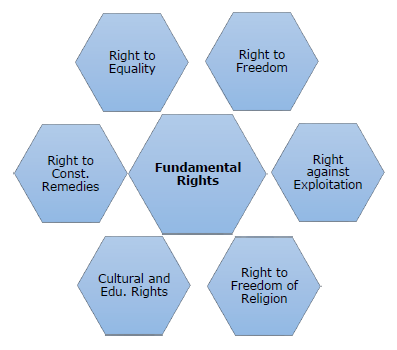
Principles
There are a few directive principles that tried to make India a welfare state. Free medical services, payment to unemployed persons, etc. are included in this principle. The right to children and women was given greater importance.
In the 42nd amendment of 1976, the word “secularism” was included. India is not a theocratic state like Bangladesh or Pakistan.
There are also some other important features like voting rights of all adults, rights to backward classes, right to the Supreme Court, etc. These features expose the real character of the Indian Constitution.
Chapter 9 Structure Of Democracy And Rights Of People Fundamental Duties
There are 10 fundamental duties like honesty to the national flag, obliging the constitution, maintaining the sovereignty of the nation, maintaining Indian culture, etc.
The Article 51A of part IVA containing Fundamental duties was inserted by the Constitution Act of 1976 which was effective from 3rd January 1977.
In the constitution, there were ten fundamental duties and now it has become eleven (11) after the 86th Amendment of the Constitution in 2002 (with effect from 1 April 2010). Now the fundamental duties of every citizen of India are as
- To abide by the Constitution and respect its ideals and institutions, the National Flag, and the National Anthem.
- To cherish and follow the noble ideals which inspired our national struggle for freedom.
- To uphold and protect the sovereignty, unity, and integrity of India.
- To defend the country and render national service when called upon to do so.
- To promote harmony and the spirit of common brotherhood amongst all the people of India transcending religious, linguistic, and regional or sectional diversities; to renounce practices derogatory to the dignity of women.
- To value and preserve the rich heritage of our composite culture.
- To protect and improve the natural environment including forests, lakes, rivers, and wildlife, and to have compassion for living creatures.
- To develop the scientific temper, humanism, and the spirit of inquiry and reform;
- To safeguard public property and to abjure violence.
- To strive towards excellence in all spheres of individual and collective activity so that the nation constantly rises to higher levels of endeavor and achievement.
- Who is a parent or guardian, to provide opportunities for education to his child or, as the case may be, ward between the age of six and fourteen years.
Chapter 9 Structure Of Democracy And Rights Of People Land Water Jungle
Right to Life-occupations and mass movements
Land, water, and Jungle are the three most important resources for the overall development of India. During British rule in India, some steps were taken for the development of resources, such as-
- Introduction of land tenure.
- Opening of road and rail communication.
- Promotion of export trade in certain agricultural commodities and
- Foundation of Dept. of Agriculture.
Thereafter ‘The Forest Research Institute’ was set up in 1890. As per the recommendation of the ‘First Irrigation Commission’ development of irrigation schemes were adopted.
In the initial period of developing water resources, the rapid harnessing of the resource was its main objective. The purposes of the water resource projects were irrigation, flood control, hydropower generation, industries, supply of drinking water, etc.
For this reason, the Government of India passed the ‘Water Prevention and Control of Pollution Act (1974)’. Agriculture provides the livelihood for the largest number of people.
The robust growth in this field guarantees the achievement of broad-based growth of income levels and employment in rural areas.
The main strategy of the development of agriculture is centered around achieving of the objectives of sustainability of employment generation, food and nutrition security, equity, and poverty alleviation.
For tribal livelihood preservation and reservation of land, water, and forest are equally important. The movement for the right to life and occupation of the people forced them to organize mass movements.
Chapter 9 Structure Of Democracy And Rights Of People Tebhaga Telengana
Mass movement in Peasants Rights protection :
1. Tebhaga:
The Tebhaga movement was a new challenge to the British when the ‘Flood Commission’s Report’ expressed that 3rd of the total produces should be in the hand of the Bargadarh cultivators.
The Communist Party of India supported the Bargadarhs and at the same time ‘Provincial Krishak Sabha’ demanded 2/3rd of the produced crops for the Bargadarhs.
“WBBSE Class 8 History chapter 9 explained on structure of democracy and people’s rights”
Due to the tremendous pressure of the C. P. I. and Provincial Krishak Sabha the Tebhaga Peasants started a movement in November 1946 A.D. The movement spread in 23 Midnapur, Jassore, Dacca, Nadia, – Myemansingh etc.
Dr. Sumit Sarkar said that in the area where 60% of the villagers were Bargadarhs, the Tebhaga movement became a spontaneous mass upheaval.
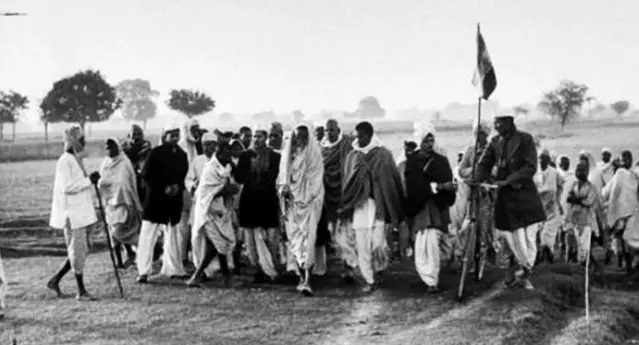
The Rajbamshi widow named Burima in the Thakurgaon village of Ramchandrapur subdivision Dinajpur of North Bengal and the Communist leader like Bhabani Sen took the leadership of the movement in Rangpur, Dinajpur, and Jalpaiguri, etc.
Apart from this Bimala Pande, Samar Mukherjee, Charu Majumder etc. took the leadership of the movement. Under the leadership of Kangsaru Halder 7000 Hindu, Muslim, and Santhal Peasants of Kakdwip of South 24 Parganas started the violent Tebhaga Movement.
A. Cooper remarked that the Tebhaga Movement spread to various places of Bengal at the end of 1946. Peasant leader Abdullah Rasul in his book. “Krishak Sabhar Itihas” admired it as a significant event.
Dr. Sunil Sen the author of ‘Peasant Movements in India’ said that 49 of the total agitators were killed. Dr. Sen said, “The main strength of the Tebhaga Struggle lay in poor peasants-the share Croppers”.
Dr. D. N. Dhanagare accepted it. But Hamza Alavi in his book ‘Peasants and Revolution’ remarked that the middle-class peasants did not have active participation in this movement.
2. Telangana
The Peasants of Telangana of Hyderabad organized a movement which took the shape of guerilla tactics of warfare. The Communist leader P. Sundarayyia and Komaya Doddy were the main organisers of the Telengana Movement.
His famous book ‘Telangana Peoples’ Armed Struggle 1946-1951, help us to know that 30,00,000 peoples of 3000 villages spread the movement in 16,000sq. miles area. The main centers were Khammam, Nalgonda, and Warangal districts.
Sundarayyia
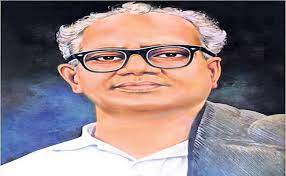
Sundarayyia said, “In these villages, the hated landlords-the pillars of Nizam’s autocracy in the rural areas-were driven away from their fortress-like houses, and their lands were seized by the peasantry.”
The peasants formed village raj against feudalism. The village raj distributed 10 lac acres of land among the peasants. The Communist party suspended the movement in October 1951.
“Structure of democracy and rights of people in WBBSE Class 8 History Chapter 9”
In the movement 4,000 Communist and peasants were killed and 10,000 Communist workers and supporters were arrested.
Chapter 9 Structure Of Democracy And Rights Of People Right To Water Jungle
Eco-centris mass movement:
The chapter newly included in the history textbook for Schools is “Jami Jal Jangal: Jiban Jibikar Adhikar O Ganaandolan” (Land, Water, Forests: The right to life, lifelihood and Peoples movements).
Mrs Mamata Banerjee had a vital role in the movement, which finally had become an eco-centric mass movement either in Singur or in Nandigram or in other places of West Bengal for the right to water and Jungle of people.
She started a movement in Singur by sowing paddy seeds.
Chapter 9 Structure Of Democracy And Rights Of People Eco Movements In 20th Century India
1. Chipko Movement (1973) in North India:
The chipko movement is the hug the movement of the trees. After passing the Forest Act of 1927 tribals in Tehri Garhwal in UP rose in open protest. A disciple of Gandhiji Saralaben founded ‘Uttarakhand Sarvadaya Mondal’ (1961).
A large number of people under Saralaben were united against deforestation. At the time local tribal women who loved tree like their son, opposed cutting trees.
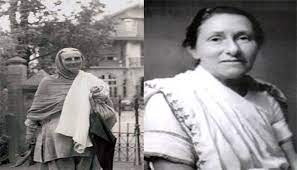
Their movement started first in the hilly region of Gopeswar in the Chameli district of U.P. in 1973, which was called ‘the Chipko Movement’.
Eminent leaders of the movement were Saralaben, Miraben, Gouridevi, Chandrika prasad Bhat, Sundarlal Bahuguna, etc. Under the leadership of Gouridevi 27 tribal women continued night patrolling or acted as night guards for the protection of trees.
Finally, Government control over cutting trees was adopted. The word ‘Chipko’ means ‘hug’, therefore by hugging trees like child women saved trees from deforestation.
2. Narmoda Banchao Movement (1985) in Western India
To protest against the Narmada River Valley Dam project ‘Narmada Bachao Movement’ (NBA) was started first by Baba Amtee. The icon of the movement was Medha Patekar. Thousands of people of Gujarat, Maharastra, and Madhya Pradesh join this movement.
Medha Patekar
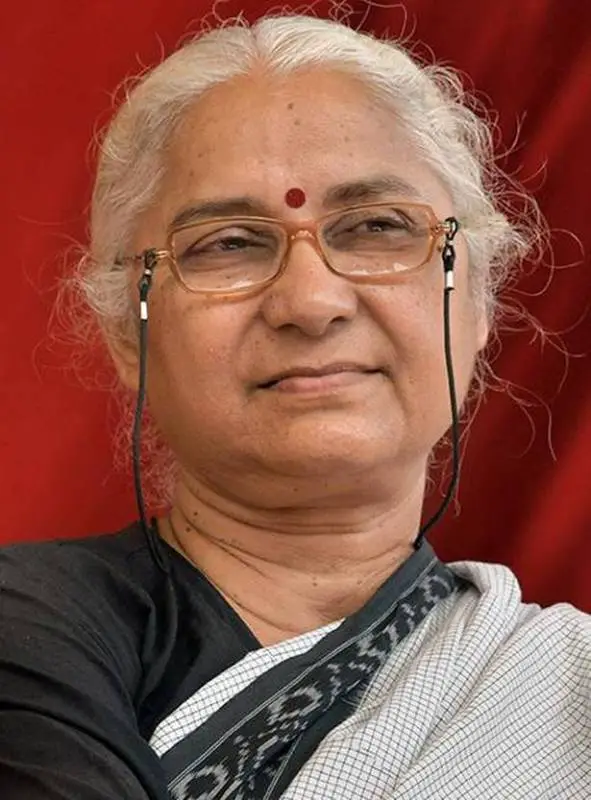
Gujarat and Madhya Pradesh governments jointly took Sardar Sarovar Dam Project on the river Narmada-a river of 1450 km long. The government decided to build 30 big dams, 135 medium dams, and 3000 small dams on the Narmada River for the purposes of
- Production of hydro-electricity,
- Irrigation system for 3 states and
- To control of floods. The 25 years of the Narmada dam project was cost of Rs. 40,000 crores.
As this project caused the eviction of 10,00,000 people, Medha Patekar continued the Narmada Bachao Movement and was successful.
3. Appiko Movement (1983) in South India
The Appiko movement was one of the revolutionary movements based on environmental conservation in India. Its leader was Pandurang Hegde born in 1956 AD.
The Chipko movement (Hug the Trees Movement) in Uttarakhand of the Himalayan region encouraged the villagers of the North Kannada district of Karnataka in South India to carry a similar movement on the protection of their forests.
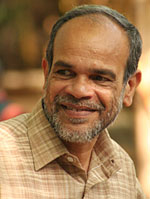
‘Appiko’ means “hug the trees”, which rapidly had become a potent expression to counter violence against, reflecting empathy toward forests.
On 8 September 1983-AD, the villagers of Salkani of Sirsi in Uttar Kannada the Appiko movement started first which was locally called “Appiko Chalkvate”. An all-time record of 1.2 million saplings were grown by people in the Sirsi area in 1984-1985 A. D.
It tried to save the Western Ghats by spreading its roots all over South India.
Its three major objectives were
- Struggle to save the remaining tropical forests in the Western Ghats,
- Attempt to restore greenery in denuded areas, and
- Striving to propagate the idea of rational utilization in order to reduce the pressure on forest resources. Its main slogan is “Ulisu (save), Beleru (grow) and Balasu (rational use)”.
4. Silent Valley Movement (1973) Kerala
The Silent Valley is a golden chapter in the history of the conservation and recognition movement in the Silent valley forests in Kerala state of South India. It is a global heritage site and a national park (1984).
The movement slogan was “Save Silent Valley”. The Pathrakkadanu Hydroelectric Project (PHEP) on the Kunthi river near Silent Valley was the main cause of this movement.
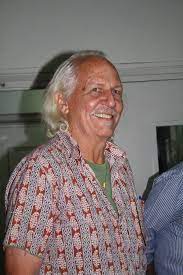
Shielded from extreme climatic variations and as well as human incursions by tall ridges, some as high as 2000 meters the 8,952-hectare Silent valley National Park on the Nilgiri plateau region remains an “ecological island”.
This valley is perhaps the only forest land in the region with a relatively peaceful evolutionary history of at least 50 million years. The Silent valley Movement was started in 1973 to save Silent Valley Reserve Forest in from being flooded by a hydroelectric Project.
“Comprehensive notes for WBBSE Class 8 on structure of democracy and rights of people”
It was a social movement aimed at the protection of this Valley, an evergreen tropical forest in the Palakkad district of Kerala. The founder of the ‘Madras Snake Park’ and the ‘Madras Crocodile Bank’ Mr. Romulus Whitaker was the leader of the movement.
Chapter 9 Structure Of Democracy And Rights Of People Right To Agricultural Land
Singur Mass movement:
The iconic Singur Mass Movement in West Bengal was organized for the protection of the Right to Agricultural land against small car factories. According to the education minister of West Bengal Sri Partha Chatterjee Singur, the movement was a “historic win of the farmers”.
Along with the Singur movement, the Tebhaga movement and Krishak Andolan with also feature in the syllabus, and students must know that this movement is one of the milestones in the country’s history.”
After announcing a small car factory in Singur on 18 May 2006, Smt. Mamata Banerjee on behalf of farmers protested against the issue on 18 July 2006.
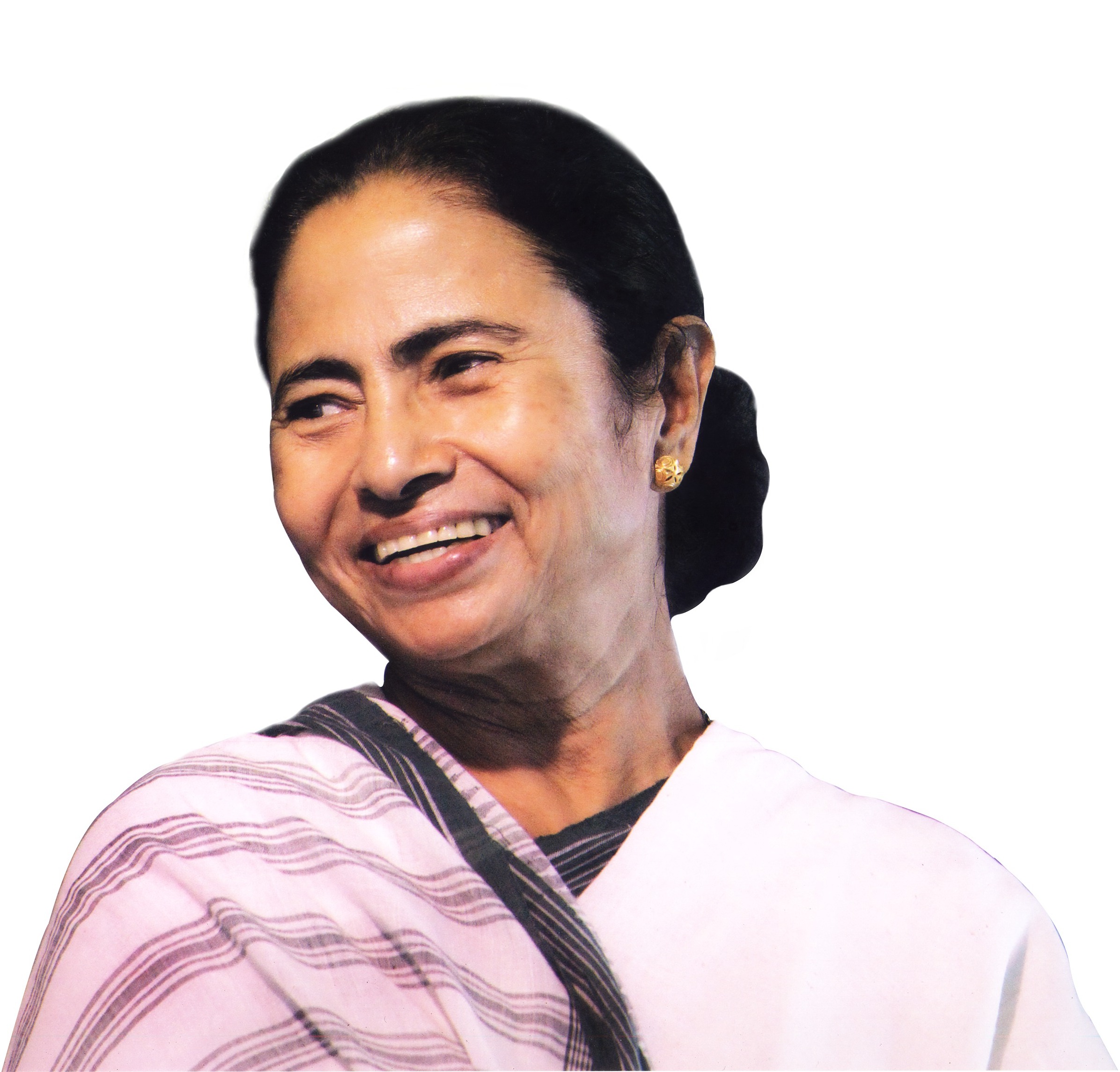
The ground of her protest was the forceful land acquisition by an elected state government, Mamata Banerjee’s Singur rally as a sign of protest started the historic movement.
The contemporary Left Government acquired 997-11 acres of multi-crop farmland to allocate for the construction of a small car factory, which was propagated as a project of public improvement. Thereafter started to build up a plant in Singur on 1st January 2007.
To protest against it many of the internationally famed social activists and Bengali Luminaries like Medha Patkar, Anuradha Talwar, Arundhuti Ray, Mahasweta Devi, and others had stood beside the movement led by Smt. Mamata Banerjee.
They thought that the factory site is the most Smt. Mamata Banerjee fertile one in the whole of Singur Block. More than 20,000 farmers are making their livelihoods from this multi-crop fertile land.
“Class 8 History WBBSE notes for Chapter 9 on people’s rights and democracy structure”
So on behalf of peasants Smt. Mamata, Banerjee started her indefinite dharna at Singur in August 2008 and on 2 September 2008, the management of the car company suspended development work on small cars.
On 3 September 2008, the then Governor of West Bengal Sir Gopal Krishna Gandhi agreed to play a mediator to resolve the issue between the government and the Trinamool Congress, but every effort had gone in vain.
But on 3rd October 2008, the small car company decided to move out from Singur, Hooghly district of West Bengal, India. Local farmers by founding the ‘Krishi Jami Raksha Committee (KJRC)’ started the Singur movement as a spontaneous resistance.
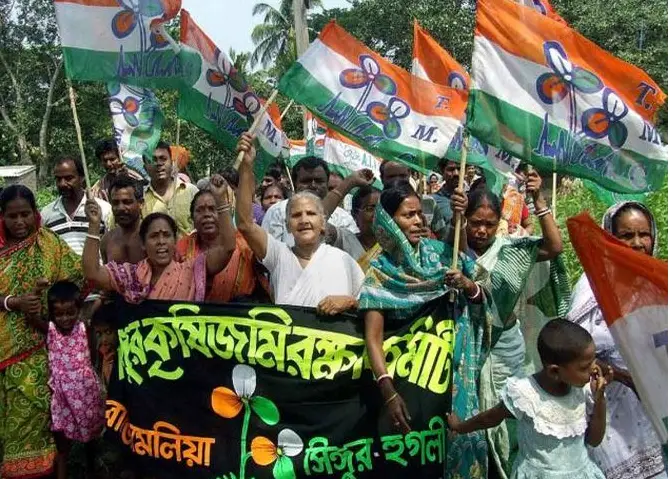
This was a mass historic movement because, in essence, it was a spontaneous movement of the people. It was not a particular political party that began the movement.
In the history of the peasant movement in West Bengal, the Singur Mass Movement is relevant in the current century. Many factors were responsible for it.
Such as-
- Eviction of nearly 15,000 people of five moujas Beriberi, Bajemelia, Khasher Bheri, Singher Bheri, and Gopalnagar from their cultivable land forcefully.
- Without discussion and legal initiative, the former Left Government seized fertile lands from unwilling farmers on the name of a small car factory.
- During land acquisition by contemporary government carried out oppressive measures on poor and helpless farmers and their families,
- By adopting the old Land Acquisition Act of 1894 near about 3000 bigha of land was acquired from thousands of land owners, pattadars, burglars, landless farmers, etc. who were severely devastated after losing their lands,
- Acquisition of highly fertile cultivable land in place of less fertile or unfertile land was another cause of this movement,
- Arrest and oppression of women and their imprisonment for many days and the torture and death of a young girl Tapasi Malik, daughter of a farmer leader made angry to the people of Singur,
- Being lost land poor landless peasants were not given sufficient compensation and on the other hand, a proposal for self-dependent economic growth and security of Women of the poor farmers, and families pursued by ‘The West Bengal Women Commission’ was not enacted,
- Role of intellectuals like Mahasweta Devi, Medha Patekar, Amlan Dutta, Kabir-Suman, Saoli Mitra, Jay Goswami, Jogen Choudhuri, Arundhuti Ray, Aparna Sen, and many others encouraged the farmers for a mass movement,
- Efficient leadership of Smt. Mamata Banerjee, Partha Chatterjee, Sovandev Chattopadhya, Sovan Chatterjee, Subrata Bakshi, Sujat Bhadra, Pratul Mukherjee, Purnendu Basu, Bratya Basu, Ashima Patra, Dola Sen, Raindranath Chattopadhaya, Becharam Manna etc. led the foundation of Singur movement on a strong basis.
For all these reasons Singur Mass Movement earned fame in India and abroad. The first martyr of the movement was Rajkumar Bhul. After losing land Haradhan Bag and Prasanta Das committed suicide and due to starvation Sankar Patra, Sankar Das, Srikanta Shee, etc. died and 10 people were killed.
But yet the movement was ultimately successful with the victory of farmers. Historians Sumit Sarkar and Romila Thapar supported the Singur mass movement.
The Singur mass movement gained international media attention since the Car Company started constructing a factory to manufacture their $2.500 car, the Tata Nano at Singur.
The state government of West Bengal facilitated the controversy by using the Colonial Land Acquisition Act’s 1894 rule to conduct an eminent domain takeover of 997 acres of farmland to have Tata build its factory.
“Rights of people and democracy structure explained in WBBSE Class 8 History”
For this reason, the project was opposed by activists and opposition parties in West Bengal. The Car company claimed that Singur would become a mini auto city and approximately 70 vendors would set up shop along with the factory an investment plan of Rs. 1000 crore.
Ten projects had however generated controversy just from the start, particularly on the question of state acquisition of fertile agricultural land for private enterprise.
This Land Acquisition Act (1894) has provisions for states to take over privately held land for public purposes but not for developing any individual or private business.
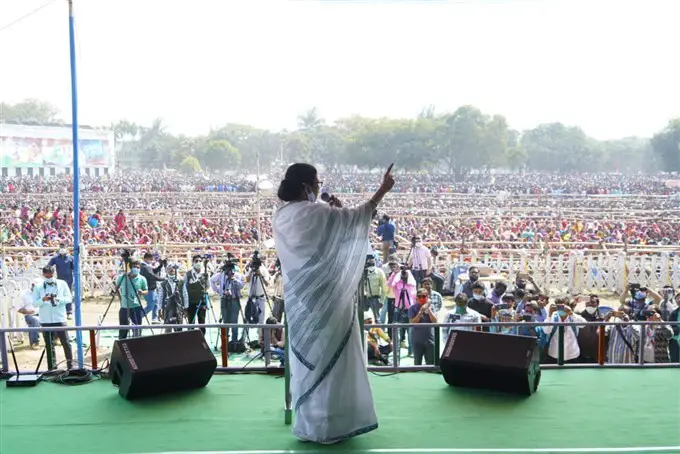
So the illegal acquisition of land had been substantially conceded by the High Court of Kolkata. As the car factory’s areas of Singur were highly fertile farmland, peasants rose in open protest against it.
Chief protesters were the opposition parties spearheaded by the Trinamool Congress under Smt. Mamata Banerjee and ‘Socialist Unity Centre of India’.
The movement got widespread support from the ‘Civil Rights’ and ‘Human Rights groups, legal bodies, social activists Medha Patekar, “Booker-prize” winner Arundhuti Ray and “Magsaysay ” and “Jnanpith Award” winner Mahasweta Devi, poet Ruchit Shah, artist Suvaprasanna, theatre and film personalities Saoli Mitra, Aparna Sen, etc.
and Nobel Laureate Amartya Sen. They supported the idea of factories or industry but opposed the forcible acquisition of farmland of farmers. The protesters however have been criticized by the Communist Party of India (Marxist).
Ultimately, the Singur Mass Movement was successful with the victory of landless farmers. As per the order of the Supreme Court farmers of Singur have got back their farmland.
Chapter 9 Structure Of Democracy And Rights Of People Singur Land Protection Movement
A decade
The land protection movement in Singur was continued for a decade (2006-2016). Ten years ago, the land protests in Singur against the proposed factory of Tata Nano made headlines across the globe and catapulted the then-opposition leader Mrs. Mamata Banerjee who came to the limelight.
By 2007, Singur had become a symbol of a popular mass movement against forcible land acquisition which paved the way for a farmer-friendly law in 2013.
Despite the loss of land and prolonged court struggle wreaking havoc on their family’s finances, many farmers refused compensation. The farmers promised for a movement.
They opposed their forcible eviction from their farmland by the then Left Front Government but not industrialization. At that time many farmers said, “we never opposed industrialization, we protested against only the government’s way of land acquisition”.
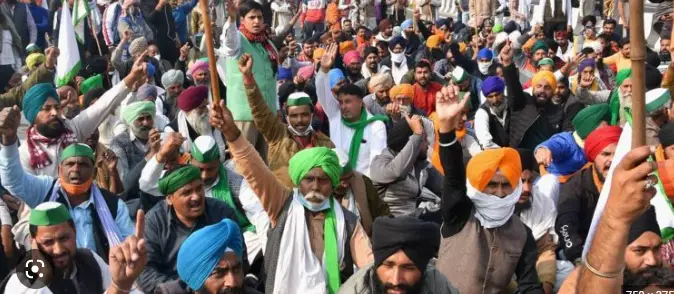
After a decade of the movement, the Supreme Court on 31 August 2016 asked for the entire 997 acres of land to be returned to their original owners-something that is not possible without removing the structures.
“Class 8 WBBSE Chapter 9 structure of democracy and rights of people study guide”
The Chief Minister of West Bengal Smt. Mamata Banerjee announced that the government will not only return land in a cultivable state but also offer various incentives to resume farming.
Farmers of Beriberi, Khaser Bheri, Bajemelia, etc. were happy with this victory.
The steps of Singur agitation were
- The Singur agitation began on 25 May 2006 with farmers rallying against Left Front governments allegedly forcibly capturing land.
- The protests saw 26 days of fasting in December 2006, with even the central government and other agencies, intervening in the matter.
- From barging into the Assembly of West Bengal and ransacking it to organizing demonstrations across the state, Mrs. Mamata Banerjee used all forms of protests in the anti-land acquisition movement.
- In 2010 small car company moved their Nano project out of West Bengal and thus the legal case in the matter began.
- After 6 years during which this case went from the Kolkata High Court to the Supreme Court of Delhi and the farmers finally got back their land through our honorable Chief Minister Smt. Mamata Banerjee.
